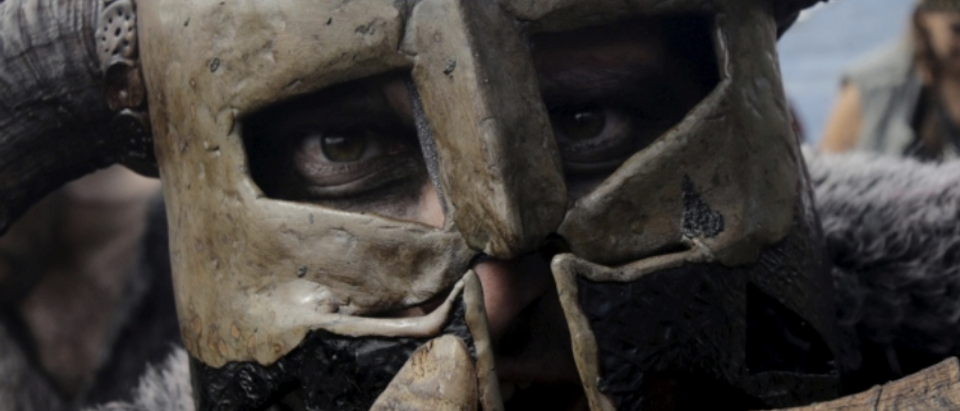The New York Times, BBC, The Guardian, and a host of other liberal media outlets have been pushing the story that there were Muslim Vikings, a claim based on a piece of cloth. The claim is baseless, says a professor of Islamic art and architecture.
The claim first surfaced on the BBC after researchers from Sweden’s oldest university, Uppsala University, claimed that symbols etched into 10th century garments belonging to Vikings bore the words “Allah” and “Ali” in Arabic script. The New York Times followed suit with its own coverage of the story.
In an interview with the BBC, researcher Annika Larsson said the symbols first appeared to be meaningless, until she remembered what Moorish textiles in Spain looked like. To make sense of her speculation, Larsson looked at the textiles in a mirror and concluded that they were an attempt to write the word “Allah” in reverse, following the logic that Arabic script is written from right to left.
University of Texas at Austin associate professor Stephennie Mulder, who studies Islamic art and architecture, has debunked the claims. Over a series of 60 tweets, Mulder expressed her exasperation at the findings and set the record straight.
“Vikings had rich contact with the Arab world. This textile? No,” she began, noting that the textile “has no Arabic at all but the story has gone viral” thanks to news outlets like the Times and BBC.
“There is something very troubling here about the relationship between news media and experts, who should have been consulted for verification,” she continued. “It should go without saying that a single scholar’s un-peer-reviewed claim does not truth make.”
“Here’s the deal with Viking ‘Allah’ textile, as I have been able to piece it together over past few days. As an Islamic art historian & archaeologist, I was immediately suspicious about style of Arabic epigraphy. It’s really so simple that I spent five days thinking, it couldn’t be that Larsson would make so fundamental and obvious a mistake,” said Mulder.
Mulder explained that the most obvious issue with Larsson’s methodology was that the Viking textile is dated to the 10th century, while the style of epigraphy in Larsson’s drawing comes from the 15th century.
“It’s a style called square Kufic, and it’s common in Iran, Central Asia on architecture after 15th century,” she said, providing an example of the style.
She added that the earliest example of the style dates to 11th to early 12th century Muslim architecture—all dating to at least 100 years after the Viking textile found in Birka. She also noted that Larsson’s drawing of the word “Allah” in Kufic script wasn’t even common until the 15th century.
In other words, Larsson and her team’s findings are the result of pareidolia—they saw Arabic patterns where there weren’t any.
Mulder’s debunking of Larsson extended to the rest of the textile, as well. She pointed out that Larsson’s claims are based on supposition, and not proof.
The professor also stated that the only reason the story went viral was because of contemporary politics. The story, she says, struck a nerve because it could serve as a rebuttal to white supremacists who long for the glory days of the crusades.
That the Vikings had contact with the Middle East and the Far East has never been in dispute. Mulder said that the “Allah” textile exhibits what Stephen Colbert referred to as “truthiness” despite being unanchored from reality, because it helped to reinforce a specific narrative.
“But ‘truthiness’ cannot be enough for news media, especially in this age of accusations of #FakeNews,” said the professor, who urged journalists to “pick up the phone” and call experts before publishing their stories.
Ian Miles Cheong is a journalist and outspoken media critic. You can reach him through social media at @stillgray on Twitter and on Facebook.


